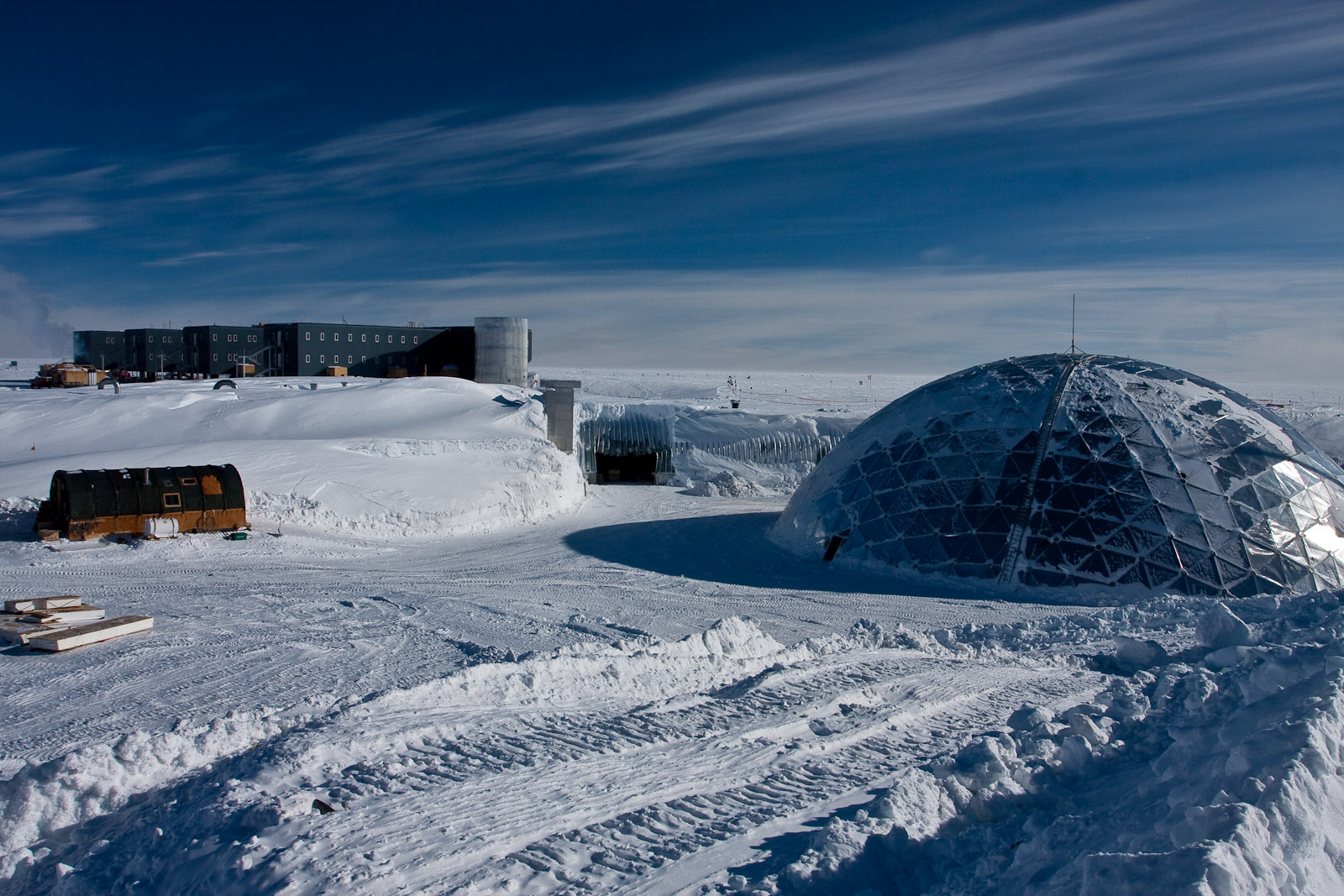
Michael Kile | 19 October 2021
Last winter, in one of the bleakest places on earth after Canberra and Belushya Guba, the capital of Novaya Zemlya, a novel hypothesis was proposed by a rogue researcher in lockdown: the more anthropogenic hot air spoken in the northern hemisphere before a United Nations climate conference, the colder it becomes in the southern hemisphere, especially at the South Pole.
The conjecture has yet to be validated by a peer-reviewed article in Nature Climate Change. Nevertheless, a lot of people – especially the self-appointed guardians of truth who call out “fake news” and “misinformation” – hope it never reaches that learned journal, and certainly not the smartphones or Twitter accounts of apoplectic activists and hysterical weather-worriers. They would prefer it just goes away and does not linger like a bad smell; or is buried deep under Antarctic snow and ice, with or without the perpetrator, before the Conference of the Parties (COP 26) begins in Glasgow-on-Clyde next month, with or without President Xi.
Yet the supporting evidence is impressive. The first part of the hypothesis is affirmed daily in the media, and by cartoons like this one (The Telegraph, 14 October, 2021):

As for the second part, global warming took a long winter vacation, at least in Antarctica. The Antarctic interior recorded its coldest April-to-September this year since records began in 1957. According to the US National Snow and Ice Data Centre (NSIDC), the average temperature at the US Amundsen-Scott South Pole Station was minus 60.9ºC for the six months. It was also the station’s second coldest winter (June, July and August) on record, with an average seasonal temperature of minus 62.9ºC. This was an extraordinary 3.4ºC below the long-term average (1881-2010) for winter.
Antarctic sea ice extent also was above average for several months. In late August it was the fifth highest in the 43-year satellite record. The maximum observed on September 1 was 18.75 million square kilometres (7.24 million square miles, over twice the size of Australia) and the second-earliest seasonal maximum in the satellite record.
Ironically, it was “relatively cool” near the North Pole last summer, compared to recent years, which allowed September’s ice extent to be the highest since 2014.
On Thursday September 30, Maximiliano Herrera, a climatologist, tweeted:
Exceptional cold in the Antarctic Plateau. The Russian Base of Vostok on 30 September dropped to a min. temperature of -79.4C, which is only 0.6C above the world lowest temperature ever recorded in October (recorded at the former Plateau Station, also in Antarctica). Extreme Temperatures Around The World

The jury is still out on precisely what caused it and its significance. According to NSIDC:
the unusual cold was attributed to two extended periods of stronger-than-average encircling winds around the continent, which tend to isolate the ice sheet from warmer conditions. A strong upper-atmosphere polar vortex was observed as well. (NSIDC, October 5, 2021)
How did the MSM cope with news that must have ruffled a few feathers on the green canary-in-the-coal-mine? Find an expert or climate waffler to hit the “anomaly” on the head quickly and dismiss it as a nothing-to-see-here “blimp”.
The other option was simply to ignore it, at least until next winter. They did that four centuries when Galileo Galilei asked a few members of the priestly class if they would like to see the moons of Jupiter through his telescope. He was later charged him with heresy placed in home quarantine, aka house arrest, for the rest of his life and given daily injections of truth serum.
In 1992, the Pontifical Academy of Sciences and Pope John Paul II officially declared he was right. It takes time, but some anomalies can turn a worldview upside down.
There was no mention of the record cold on our ABC. Perhaps I missed it. My ABC Search for the “South Pole and Antarctic winter temperatures 2021” produced, inter alia, the following: Rare event over Antarctica driving Australia’s hot, dry weather (9 Sep 2019); How Pluto’s moon Charon got its red cap (15 Sep 2016); One year in Antarctica: Darwin teacher’s life surrounded by whales, polar caps and pirate parties (3 Feb 2015); Fact check: Rupert Murdoch misleading on North and South Poles (12 Aug 2014); and Russia reaches ancient Antarctic lake (9 Feb 2012).
The Washington Post, however, jumped the gun. Its Capital Weather Gang made this post four days before the NSIDC announcement: “South Pole posts most severe cold season on record, a surprise in a warming world. While the rest of the world sizzled, the South Pole shivered with an average temperature of minus-78 degrees [Fahrenheit] over the past six months.”
We first learned of this record through a tweet from Stefano Di Battista, who has published research on Antarctic temperatures. The legitimacy of Di Battista’s information was confirmed by Richard Cullather, a research scientist at NASA’s Global Modeling and Assimilation Office, who provided a chart. (Washington Post, October 2, 2021)
To prevent a pandemic of climate anxiety among nervous folk struggling to “process” the South Pole data, the Gang emphasised “the planet and Antarctica are still warming”.
Scientists stressed that the record cold over the South Pole in no way refutes or lessens the seriousness of global warming. Antarctica is notorious for its wild swings in weather and climate, which can run counter to global trends.
In other words, record cold is merely “weather”. Global warming is “climate”, even if there is no such thing as a global climate. The post included the following quotes:
Ted Scambos, senior research scientist, University of Colorado: “the Antarctic climate is extremely sensitive to high-altitude winds and Pacific Ocean conditions and prone to rapid change.”
Eric Steig, professor of atmospheric sciences, University of Washington: “One cold winter is interesting but doesn’t change the long term trend, which is warming.”
David Bromwich, professor of atmospheric sciences, Ohio State University: attributed the cold to increasing “short-term variability” at the South Pole in recent years. “In the long-term average Antarctica is warming.” Not only is Antarctica warming over the long-term, but its ice is allegedly “rapidly melting, contributing to sea-level rise”.
CCN posted a week later. Allison Chinchar, a CNN meteorologist, stressed the difference between short-term weather and long-term climate: “scientists agree that since the 1950s extreme cold snaps do occur, but climate change is bringing far more heat records than cold records.” Yet there have been no “cold snaps” of this year’s magnitude ever recorded at the South Pole or the Antarctic interior.
Ms Chinchar then added this comment:
One great example of this is while June-August of this year may have been quite cold, February of the previous year recorded the new all-time record high for the Antarctic continent. On February 6, 2020, the Esperanza Research Station recorded a high temperature of 18.3°C degrees (64.9°F). This broke the previous record for the Antarctic region (continental, including mainland and surrounding islands) of 17.5°C (63.5°F) recorded in March 2015 at the same station. (CNN Weather, October 9, 2021)
As I explained in a post early last year, the Esperanza base is actually outside the Antarctic Circle, which runs 66°33′48.0″ south of the Equator. It is misleading – some might say mischievous – to imply that “record” temperature measurements on the Antarctic Peninsula – less than 5 per cent of the continent – and especially those taken on the “surrounding islands” at its northern extremity, are meaningful for the Antarctic continent itself.
Antarctica’s hottest day? Not so Fast
Zack Labe, a climate scientist at Colorado State University, and many other experts, also explained it away: “while the globe may be warmer than average as a whole, some areas will still observe colder temperatures and even severe cold outbreaks.”
As for data that might challenge the warming orthodoxy, if you cannot identify its cause, if your model did not – and could not – predict it, you can stuff it in an attic labelled “natural internal variability”; or shove it down an Orwellian memory hole, “whereupon it would be whirled away on a current of warm air to the enormous furnaces hidden somewhere in the recesses” of a NetZero precinct.
A recent study concluded that Arctic warming is linked to colder winters. It claims to show that “increases in extreme winter weather in parts of the US are linked to accelerated warming of the Arctic.”
According to one of its authors, Professor Chaim Garfinkel from Jerusalem’s Hebrew University: “there has been a long-standing apparent contradiction between the warmer temperatures globally and an apparent increase in cold extremes for the United States and in northern Eurasia. And this study helps to resolve this contradiction.” Except there was nothing “apparent” about the US cold extremes. They were real. A Nobel Prize must be a shoo-in for such flights of fancy.
Note the intriguing logic: warming apparently can produce cooling. If so, then presumably evidence of cooling anywhere cannot be used as a counter-argument to challenge the global warming paradigm. A frigid winter, therefore, even on a continental landmass twice the size of Australia “doesn’t mitigate the seriousness of climate change.”
Yet as Karl Popper argued last century, a theory that is not refutable or falsifiable by any conceivable event – one that is explanatory like Marxism or Freudian psychology, or climate prognostication – is pseudoscience.
Even when no warming is detected, it is apparently still there, invariably “masked” by something else. That at least is what Clem, K. R. et al. suggested in their Nature Climate Change paper last year, Record warming at the South Pole during the past three decades. The summary:
Over the last three decades, the South Pole has experienced a record-high statistically significant warming of 0.61 ± 0.34 °C per decade, more than three times the global average. Here, we use an ensemble of climate model experiments to show this recent warming lies within the upper bounds of the simulated range of natural variability. The warming resulted from a strong cyclonic anomaly in the Weddell Sea caused by increasing sea surface temperatures in the western tropical Pacific. This circulation, coupled with a positive polarity of the Southern Annular Mode, advected warm and moist air from the South Atlantic into the Antarctic interior. These results underscore the intimate linkage of interior Antarctic climate to tropical variability. Further, this study shows that atmospheric internal variability can induce extreme regional climate change over the Antarctic interior, which has masked any anthropogenic warming signal there during the twenty-first century.
The “statistically significant warming”, of course, now looks somewhat less significant given last winter’s 3.4ºC below the long-term average (1881-2010) a year later, not to mention projected global warming of 1.5C ºC by mid-century.
As for the proposed “intimate linkage of interior Antarctic climate to tropical variability”, it sounds like the butterfly effect in chaos theory on steroids. If you accept that renewable-energy witchcraft can change a planet’s temperature and climate, you will have no trouble linking intimately with this claim.
A correction was published online on 29 June 26, 2020, obviously a typo and not a Freudian slip: “In the version of this Article originally published, in Fig. 4, the label ‘West Pacific cheating anomalies’ should have been ‘West Pacific heating anomalies’.
The Clem paper was a treat for Carbon “clear on climate” Brief, who posted on it on June 26, 2020. It must have been surprised to learn the so-called “record heat” was driven “largely by natural swings in Antarctica’s climate”, according to study lead author Dr Kyle Clem. Dr Clem is a polar researcher at the Victoria University of Wellington, New Zealand.
Dr Kyle Clem: Research over the past couple decades revealed the Antarctic plateau, the coldest and one of the most remote places on Earth, had been cooling while global temperatures were increasing…Our study has found that this is no longer the case. The South Pole is now one of the fastest warming regions on the planet, warming at an incredible three times faster than the global average rate. (Carbon Brief, 26 June, 2020.)
How odd, then, it still “appeared very likely that it worked in tandem with human-caused warming….Our results suggest global climate change very likely played a role, but it was not the dominant driver.” In fact, their modelling found that the warming “would have been possible in a world without greenhouse gas emissions – but only just.”
Climate Brief dodged the obvious question: how did Dr Clem’s team differentiate human-caused warming from the natural swings and roundabouts. It remains a mystery, at least to this author.
It took humankind most of its existence to wake up to the fact that the sun does not rise in morning. A few months of data from the South Pole, however important, is unlikely to deflate three decades of climate alarmism and today’s madness. The Church after all survived the heliocentric revolution, so will Church of Climate Change. The greater human misery, the more seductive the promise of redemption, especially if a vast amount of money can be conjured up by gaming the warming scare. The Church’s ancient indulgences have morphed into “carbon” (dioxide) credits, its Heaven into a Net Zero utopia.
As Galileo remarked: “people tend to refuse to consider evidence, if what they might discover contradicts their beliefs.” As he left the courtroom, it is said he whispered (translating from the Italian), “all the same, it moves – and minus 60.9ºC is rather chilly, especially on a warming planet.”


